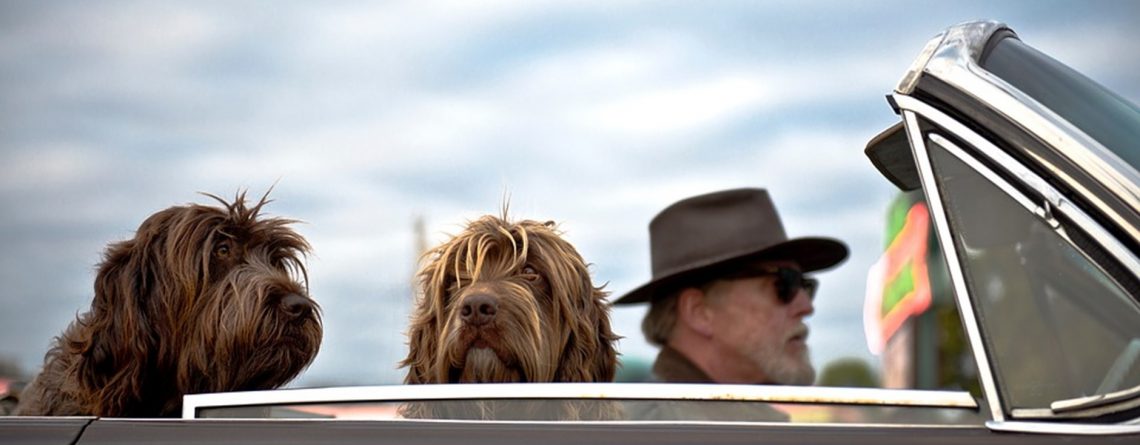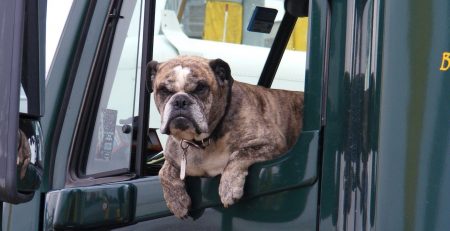Is it essential that my dog is restrained when traveling by Car or RVs?” Can I roll down the window? Should I travel with my dog? We answer all of these questions here.
If a dog is part of your life and you are going to travel with your dog by car or RVs, you must take care of the comfort and safety of your pet with certain precautionary measures to avoid accidents. In this article, we are going to discuss everything you need to know if you are going to travel with your dog.
Should I travel with a dog?
When you welcome your dog home, you want to share everything with him. In the USA, the dog is in fact considered a full member of the family. This, therefore, explains the need we have to include it in all our activities or travel plans! But before you consider traveling with a dog, there are several parameters to consider in order to prepare for it as best as possible. So what are the pros and cons of traveling with a dog?
The advantages of traveling with your dog
Make your dog more adaptable
Getting out of his comfort zone at a very young age allows the dog to adapt much more easily to new situations that he may encounter during his life. He will be able to sleep peacefully in other accommodation than his own, easily take all kinds of transport (car, boat, train, plane, etc.), go to a restaurant without getting excited. In fact, a dog used to accompanying his masters everywhere will know how to calm down when it is necessary to be calm and therefore, will reconnect more quickly to his referent in situations that are initially worrying. And if, after having accompanied you to the village market, your animal is rewarded with a nice game in the forest or on the beach, then the dog’s education will take place naturally thanks to all the experiences you will give him.
Work on dog socialization

Traveling with a dog allows him to quickly acquire good socialization with the world. The dog meets different people with different faces, different voices, different energies so that he will gradually find it normal to be around other human beings than his masters. And the more people your animal will meet, the less it will be excited or fearful depending on its nature. This is also valid for socialization between dogs. If during your trip you allow your animal to meet other puppies or well-coded dogs, on the one hand, it will be good learning of the canine codes for him (there is no better trainer for a dog than another well-coded dog) and on the other hand, it will allow him to satisfy his natural need for socialization with his peers.
Strengthen the bond with your dog
When traveling, we are far from the metro-work-sleep routine and therefore we have more time to devote to the education of our animals. The master’s more relaxed state of mind is conducive to this. It’s not about spending half of your trip educating your pet by having long, repetitive, and boring daily sessions. By mixing small regular education sessions into your activities, you will be educating your dog without even realizing it. Working on reminder during your walks in the countryside, walking on a leash during city walks, relaxation during a boat trip, will durably strengthen your bond with your dog because you will both have fun.
Meet other people
A dog is cute! We all agree on that! Traveling with a dog, in general, tends to break the ice and often prompts people to come and chat. And in addition to allowing you to meet people, it will have the double advantage of making dogs a little fearful and more and more confident with strangers. Visits to the vet will one day become a formality for your dog when they were dreaded before!
The disadvantages of traveling with a dog
Encountering administrative constraints
Depending on the country you are traveling, your dog may not be able to make the trip with you. Indeed, if, in the USA, we can legally adopt a dog from 8 weeks, some countries require that the animal is more than 3 months old to enter their territory.
Take into account physiological constraints
The dog, in full growth, does not, therefore, have the same physical capacities as an adult dog. It will therefore not be able to accompany you on long walks or hikes. And this, even if it seems to you full of energy and able to make the complete ride. The musculoskeletal system of a young dog is still fragile and it is better to offer him several short walks during the day rather than one big walk. This will prevent your dog from having locomotor problems later on. Also, the younger the dog, the more sleep it needs. This parameter will also be taken into consideration when planning your trip. You will therefore need to take regular breaks during the day to allow your pet to sleep.
Deal with climatic constraints
 The dog, by its young age, maybe more fragile in hot weather or cold. Depending on your destination, you will therefore have to think about protecting your dog and/or avoiding going out during the day. In the car, in summer, install a cooling mat in your pet’s cage and offer him to drink regularly.
The dog, by its young age, maybe more fragile in hot weather or cold. Depending on your destination, you will therefore have to think about protecting your dog and/or avoiding going out during the day. In the car, in summer, install a cooling mat in your pet’s cage and offer him to drink regularly.
Take into account behavioral constraints
The education of your dog will be done at the time of the trip so you may end up with a dog who will not yet be able to stay alone or who will not yet be clean. Your pet will probably not have a good recall and maybe pulling on a leash. Therefore, your program should be based on the capabilities of your dog at the time of the trip. If you have had time to work on the animal’s cleanliness and ability to be alone before setting out, you may consider leaving it alone for an unauthorized visit to the dogs. Otherwise, it may be necessary to give up this visit.
In summary, the younger the dog is upon departure, the more concessions you will have to make during your trip. But the younger the dog is used to having different experiences, the more quickly he will be adaptable.
Road safety for dogs: keep your dog safe when traveling with him by car
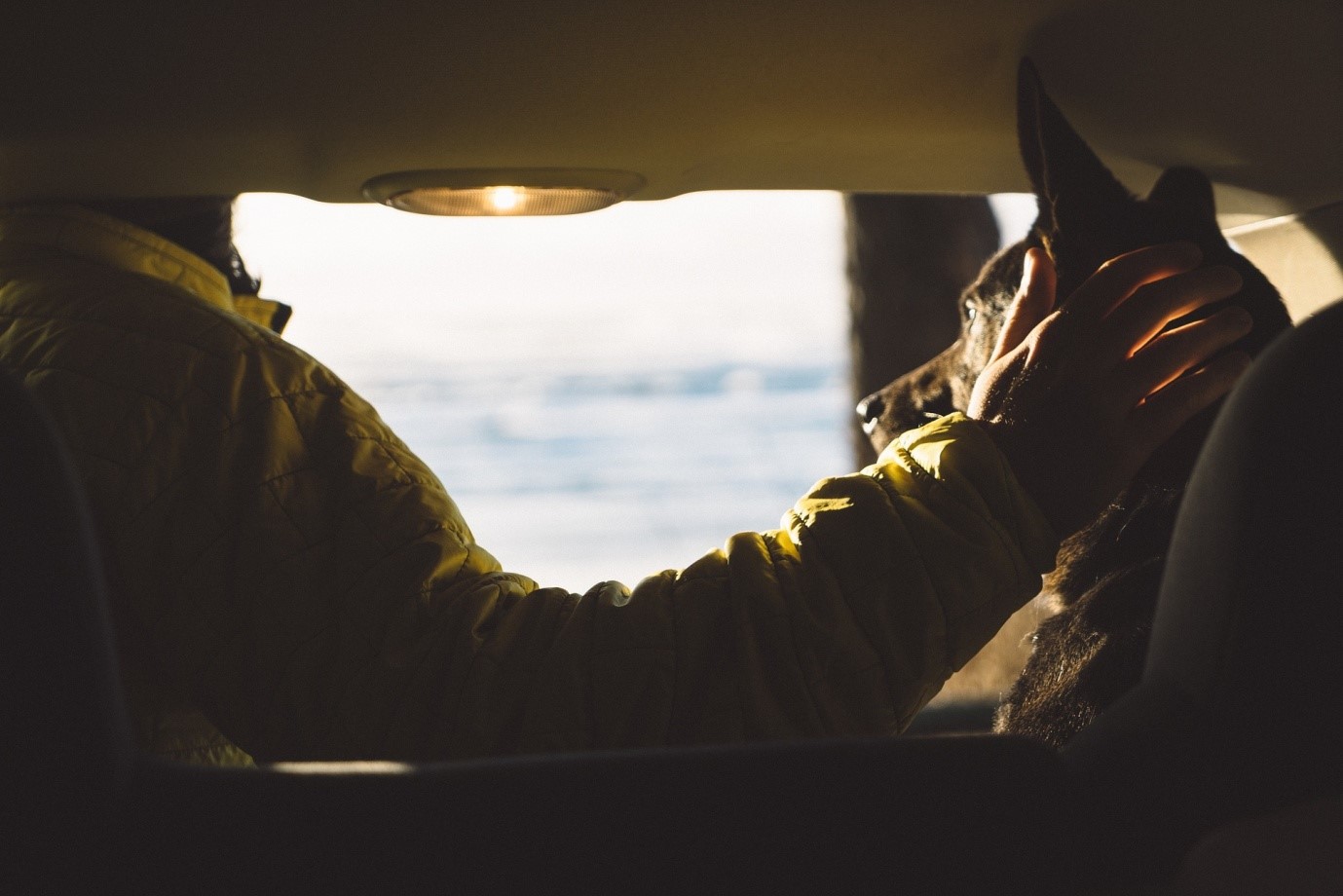
Like any other member of the family, when taking your dog by car or RVs, it needs protection against possible road hazards. Here we give you some safety tips for traveling with a dog by car or RVs.
Immobilize him with a harness or transport him inside a cage or carrier
In some countries, this is required by law. Of course, in the case of the harness, it is a special travel belt that protects against collisions. If you travel with your dog by car using a carrier or a dog carrier, make sure that these are large enough so that the dog can stand, sit or lie down, and that they are positioned horizontal (preferably on the floor of the vehicle or in the trunk). If you have a station wagon or saloon vehicle, or a larger one, consider also using a protective barrier. And be careful, it is not a good idea to leave a dog loose inside a 4 x 4 or a trailer, even if you move through the field.
Helps fight anxiety
So that your dog does not get nervous in the car or RVs (like, for example, when you go to the vet or on a trip):
- Familiarize your dog with your vehicle when it is stopped.
- Try to take short “practice” trips to places that you like, like the park or the beach, for example. The aim is for the dog to see that nothing is happening: we have gotten into the car, we have moved, we have got out and nothing has happened. There is no reason to be afraid.
- Drive carefully, without accelerating or sudden movements, so that your dog does not associate it with a negative experience.
Take breaks
If you decide to travel with your dog by RVs for several days or cover a considerable distance, be sure to take a break every few hours. Let the dog out on his leash in a quiet place to “stretch his legs” and take a short walk or play a bit, as well as allow him to relieve himself.
Very old dogs have a hard time jumping or getting into the vehicle; One way to make this easier for them is to provide a ramp.
Bring your own water reserves
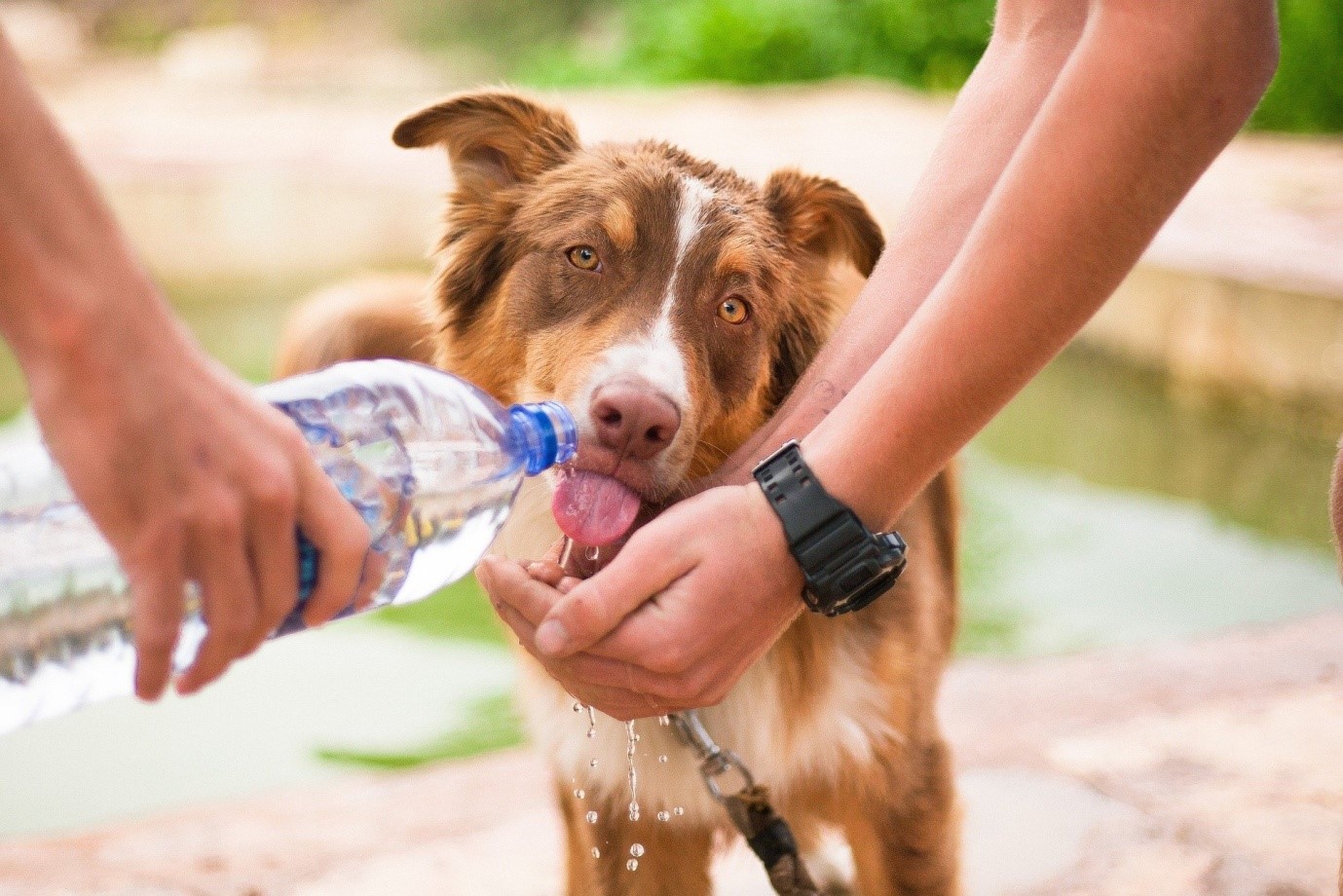
Sometimes in public sources, there are parasites, like Giardia. To keep your dog safe and hydrated and avoid suffering from problems in the gastrointestinal tract, try to bring your own drinking water from home, and of course, a bowl to give it to him.
What you should NOT do when taking your dog in a car or RVs!
Prevent me from sticking my head out the window
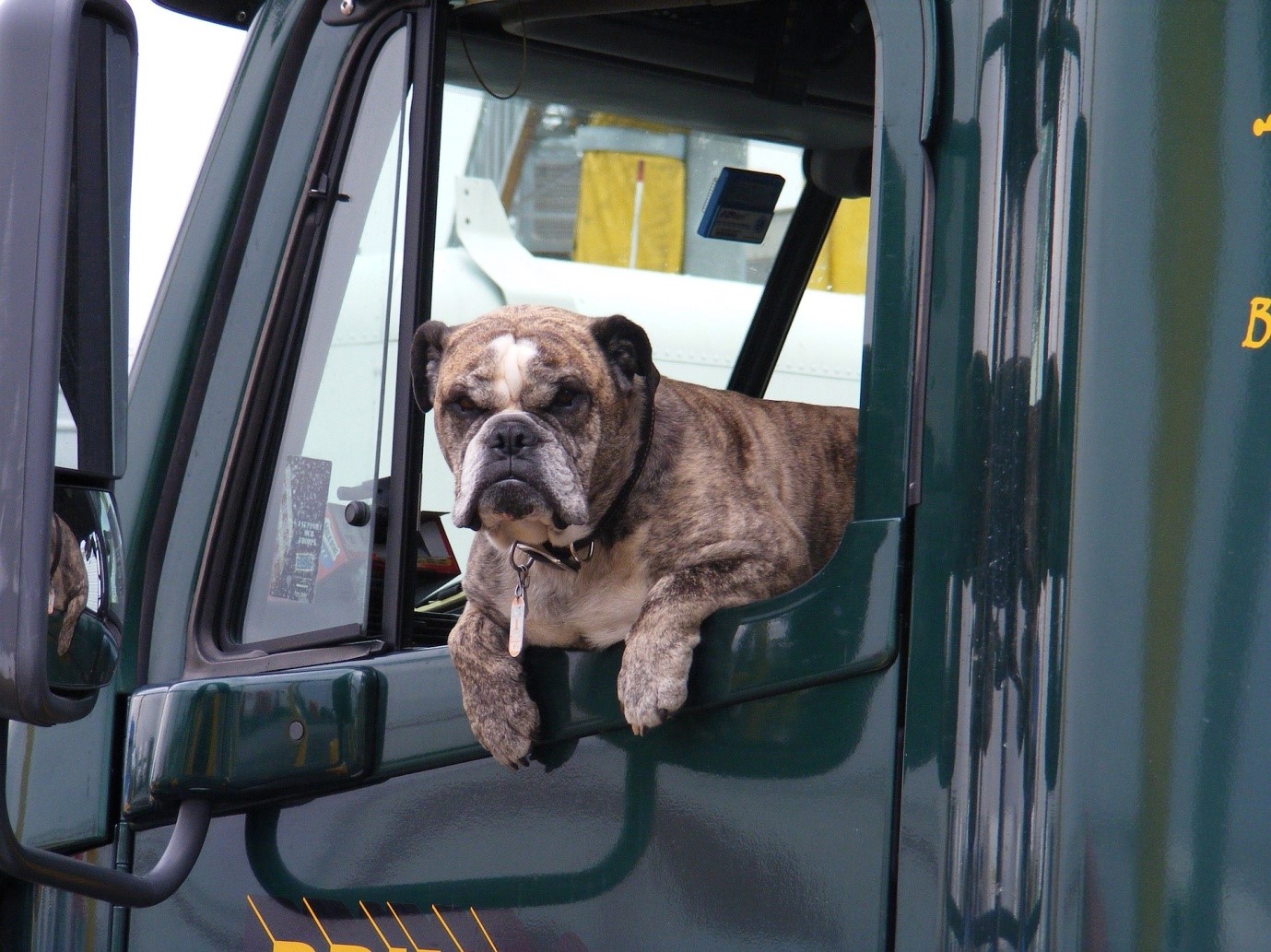
Although dogs love being blown in the face, it is not a good idea to let them stick their heads out the window. Sometimes there are objects in the road that can be thrown when a car passes, so your dog could be injured. Don’t take that risk. You can of course roll your window down, but just enough to get fresh air.
Beware of extreme temperatures
On cold days, but also on very hot days, do not leave the dog alone in the car. And of course, never with the windows up. The heat is a serious danger that puts the life of the dog at risk since the temperature inside the vehicle can skyrocket in a few minutes. In summer, ventilate your car well or turn on the air conditioning for a while before you get in. Try to park in shady areas when possible, or use an umbrella on long trips. If you take your dog in a trailer, you must use a cage or carrier that has adequate ventilation and is protected against rain, sun, wind, and other atmospheric elements.
Avoid distractions
Yes, your dog is adorable, but remember to keep your eyes on the road and not allow any distractions that pose a risk. That includes never letting your dog sit on your lap while you drive.
Don’t feed your dog in the car

Even though we people love to eat snacks on the road, try to keep your dog from getting dizzy in the car. To do this, you will only have to feed him something light or a little amount of feed during breaks if it is a long trip. Using products to prevent nausea and vomiting helps to lessen the effects of moving the car. Ask your vet about the use of calming pheromones to help your dog calm down in situations that may cause stress.
In any case, try not to give him food or drink in the 3 hours before the start of the trip to avoid a full stomach and inopportune problems arising inside the vehicle.
Happy Traveling!


